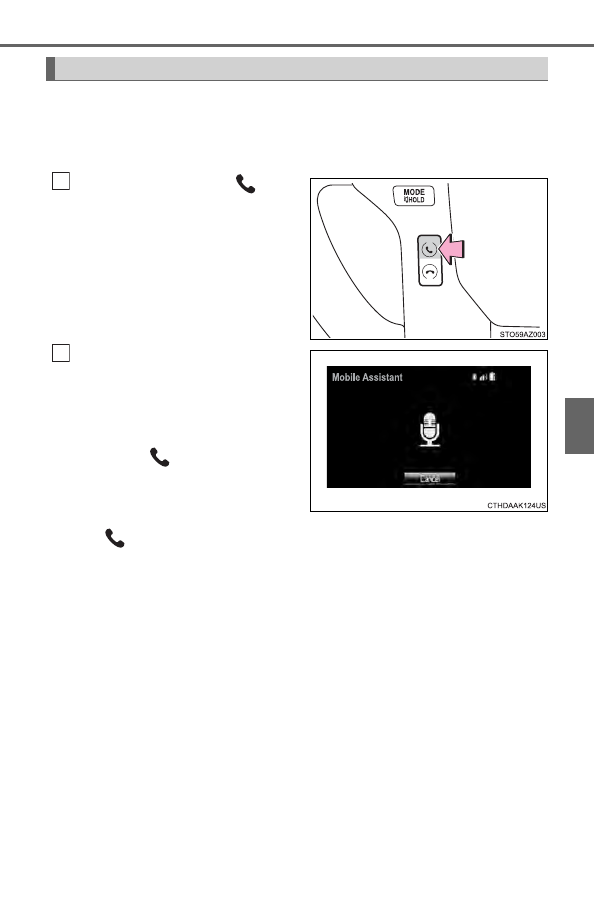Toyota Tundra (2019 year). Manual - part 26

401
5-10. Using the voice command system
5
Mu
ltim
The Mobile Assistant feature will activate Apple’s Siri
®
Eyes Free
mode via the steering wheel switches. To operate the Mobile Assis-
tant, a compatible cellular phone must be registered and connected to
this system via Bluetooth
®
. (
P. 363)
Press and hold the
until
you hear the beeps.
The Mobile Assistant can be
used only when the following
screen is displayed.
To cancel the Mobile Assistant,
select “Cancel”, or press and
hold the
on the steering
wheel.
To restart the Mobile Assistant
for additional commands, press
the
on the steering wheel.
• Mobile Assistant can only be restarted after the system responds
to a voice command.
• After some phone and music commands, the Mobile Assistant
feature will automatically end to complete the requested action.
■
Adjusting the Mobile Assistant volume
The volume of the Mobile Assistant can be adjusted using the
“PWR/VOL” knob of steering wheel volume switches. The Mobile
Assistant and phone call volumes are synchronized.
Mobile Assistant
1
2